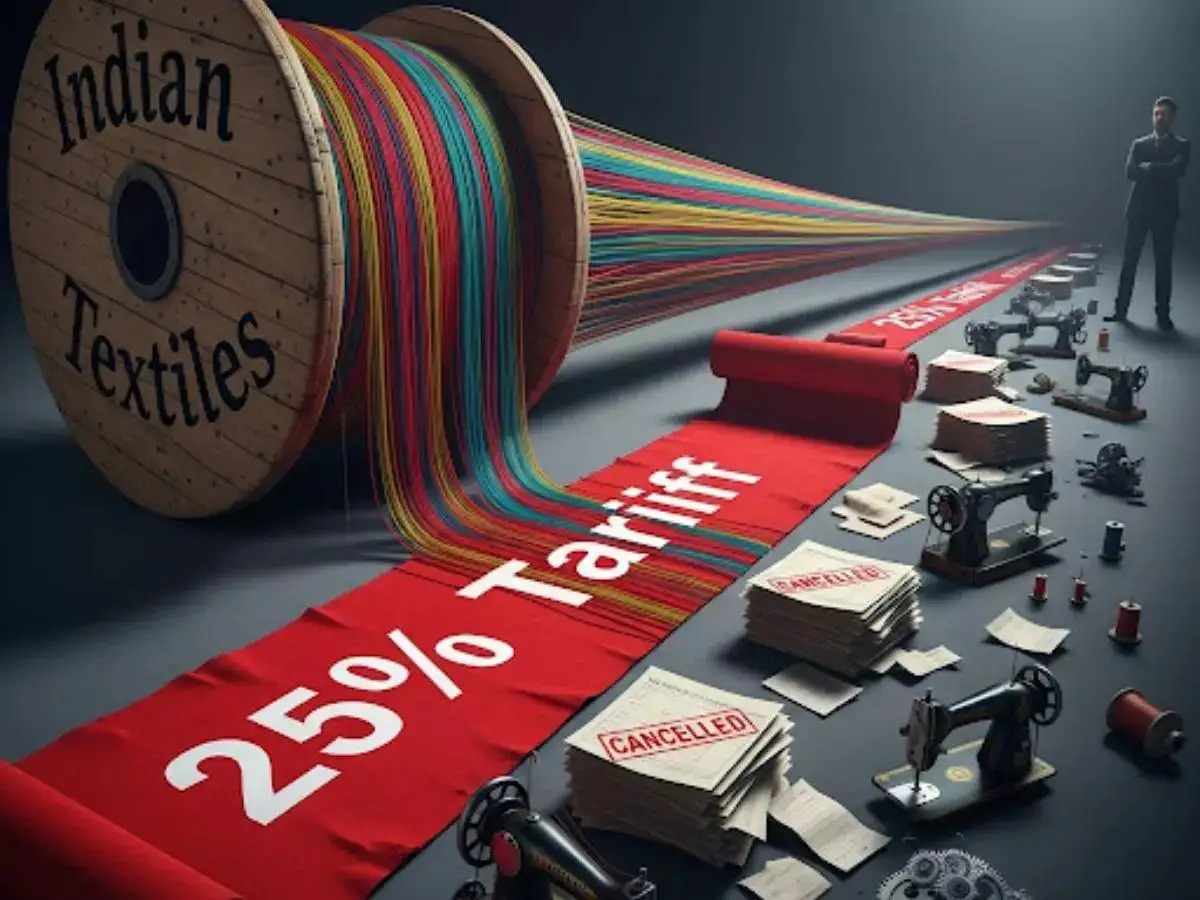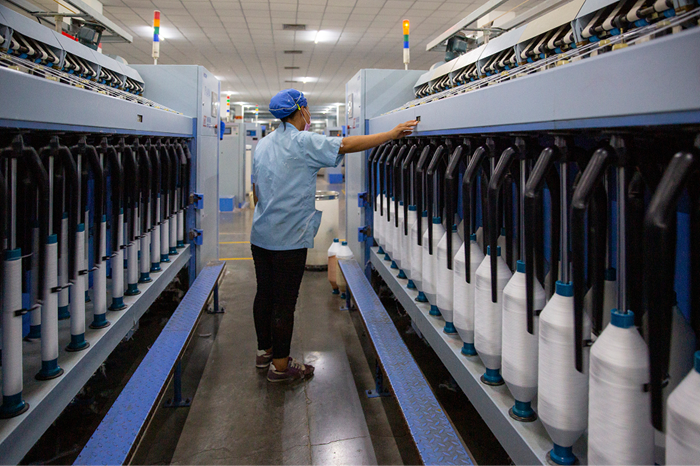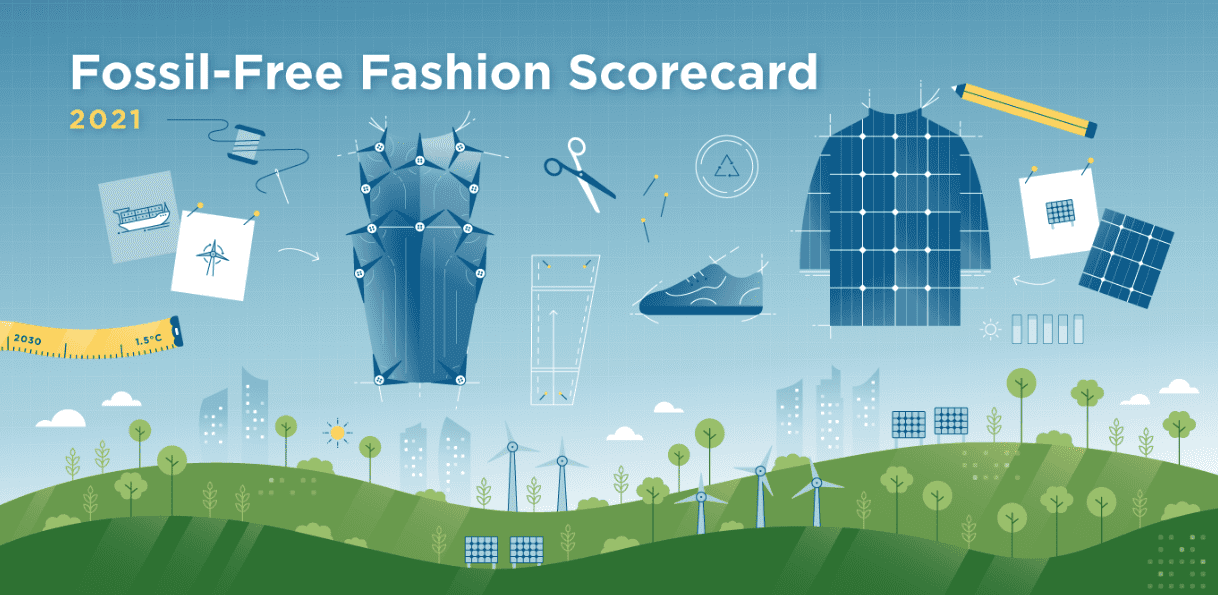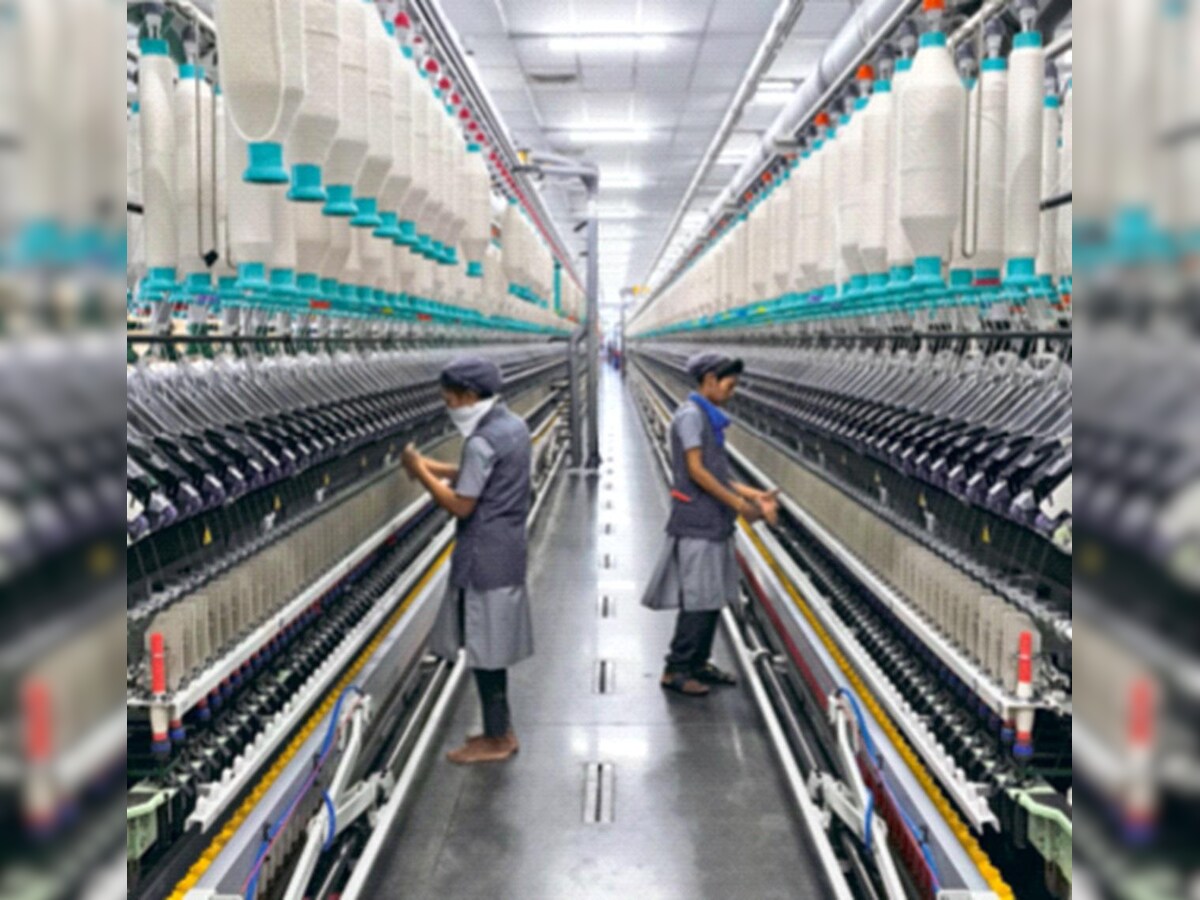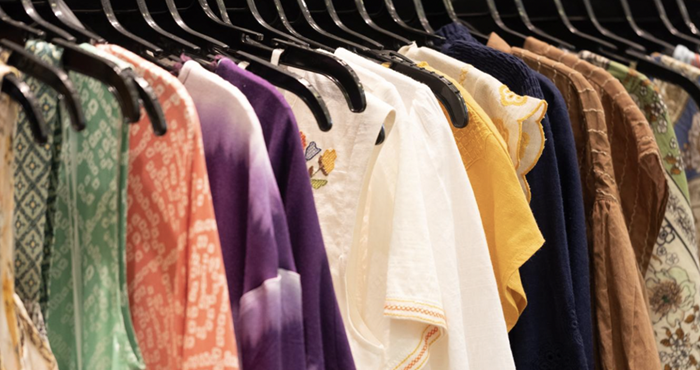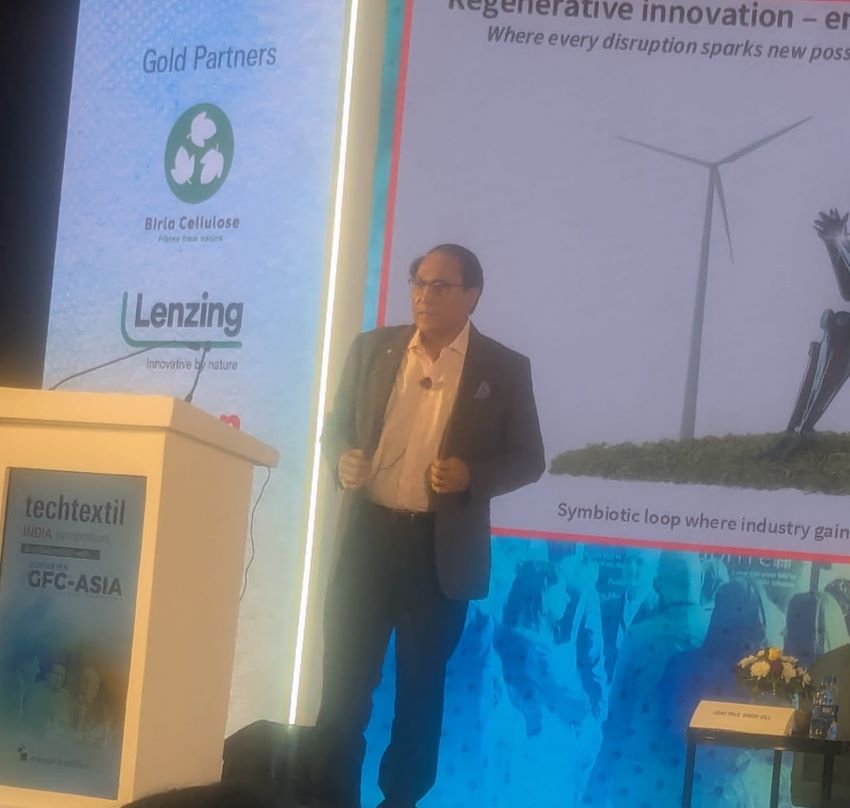FW
Arvind Ltd’s performance in Q2, FY26 ended September 2025 showed positive growth across its key revenue metric.
The company successfully increased its consolidated revenue from operations by 8 per cent Y-o-Y to $267.4 million for the quarter. This growth signals continued strength and recovery in its core textile and apparel businesses, which include segments like denim, wovens, and garments.
The increase in revenue indicates that the company is effectively capturing market demand and benefiting from its operational strategies during the period.
A worldwide leader in industrial machine needles, precision components, and textile system solutions, Groz-Beckert is set to participate in Techtextil India 2025. The event will be held from November 19–21, 2025, at the Bombay Exhibition Center in Mumbai.
The company plans to showcase innovations across four primary product areas including Nonwovens, Weaving, Warp Knitting, and Sewing with a specific focus on processing technical textiles and other high-performance materials.
At Techtextil India, Groz-Beckert will emphasize its wear-optimized solutions for nonwoven production. These technologies are engineered to boost process stability, improve material consistency, and decrease operational downtime.
Key nonwoven technologies on display include Felting Needles with Enhanced Barb Geometry, These latest barb designs are optimized for abrasive and mineral fiber blends, ensuring reduced needle wear, a lower tendency for clogging in materials like bentonite and a more uniform surface appearance even at high throughput rates.
Featuring SiroLock plus worker and doffer wires, the InLine Card Clothing Solutions: solutions offer improved fiber control and web uniformity, extended service life and maintenance intervals and higher and reproducible carding quality throughout production runs.
These advanced nonwoven solutions support demanding industries such as automotive interiors, geotextiles, filtration, hygiene, and insulation materials.

When India’s Ministry of Textiles unveiled its four-point action plan recently, it wasn’t just another policy announcement it was a blueprint for an industry at a crossroads. With textile and apparel exports stagnating at $37.7 billion in FY2024-25, the government’s ambition to nearly triple it to $100 billion by 2030 signals a decisive move to reclaim India’s historical dominance in global fabrics and fashion trade.
The Blueprint: Three horizons, one vision
The Ministry’s roadmap divides reforms across three temporal horizons: short-term (two years), medium-term (five years), and long-term (beyond 2030), to tackle structural bottlenecks that have kept Indian textiles less competitive than China, Bangladesh, or Vietnam.
Table: India’s textile action blueprint (2025-30)
|
Phase |
Duration |
Focus |
Core targets |
|
Short-term |
FY25-FY27 |
Cost rationalization & infrastructure optimization |
Reduce logistics cost from 11% to 8% of export value |
|
Medium-term |
FY27-FY30 |
Labour productivity & technology infusion |
30% jump in worker efficiency, 50% rise in automated processes |
|
Long-term |
Post-FY30 |
Brand India & value-chain repositioning |
Move 40% of exports to high-value categories (technical textiles, fashion apparel) |
Cost Rationalization: Stitching efficiency into the supply chain
The first pillar of reform centers on production cost optimization. Textile clusters in Surat, Tirupur, and Panipat face cost structures 15-20 per cent higher than Asian peers due to fragmented logistics and outdated energy systems. The government plans to:
• Integrate 20 textile parks under the PM MITRA initiative with digital logistics corridors.
• Offer interest subvention for green power adoption in dyeing and spinning units.
• Establish common effluent treatment facilities (CETPs) to reduce compliance overheads.
The government’s three-phase plan lays out a sequenced reform blueprint. In the short term, India is focused on reducing operational costs mainly through supply chain integration and logistics efficiency. The medium-term goal turns inward to labour and technology, focusing on boosting worker productivity and automation to make Indian factories more globally competitive. The long-term vision shifts from volume to value repositioning India’s export profile toward premium categories like technical textiles, performance wear, and fashion apparel, which yield higher margins and global brand recognition.
Table: Cost competitiveness (2025 baseline)
|
Country |
Average Export Cost per kg ($) |
Logistics Cost % of Export Value |
Power Tariff (kWh) |
|
India |
$2.20 |
11% |
9.5 |
|
Bangladesh |
$1.95 |
8% |
8.2 |
|
Vietnam |
$2.10 |
7% |
8.8 |
|
China |
$2.30 |
6% |
7.9 |
Source: Ministry of Textiles, Industry Estimates, 2025
This comparison exposes India’s structural cost disadvantage within Asia. Indian textile exporters spend more on logistics and energy both key input costs. Logistics alone consumes 11 per cent of export value, compared to 7-8 per cent in Vietnam and Bangladesh. Similarly, power tariffs remain among the region’s highest. This explains why India’s textile margins are squeezed despite cheaper labour. If the short-term cost rationalization plan (like integrated parks and green energy incentives) succeeds, India could narrow this 15-20 per cent cost gap by FY2027, making its exports far more competitive in global markets.
Workforce and automation, the loom of the future
In the medium term, the plan targets labour productivity an area where India lags significantly. According to a Deloitte-Textile Federation report, Bangladesh’s apparel worker produces 25 per cent more garments per shift than an Indian worker, largely due to better line balancing and digital workflow systems.
Key measures:
• A Skill Acceleration Mission to upskill two million workers in lean manufacturing and technical textile operations.
• 50 per cent capital subsidy for adopting digital cutting and stitching equipment.
• Expansion of AI-driven quality control systems under the Samarth 2.0 program.
Table: Productivity benchmarking (2025)
|
Country |
Garment units per worker per shift |
Automation level (%) |
Target automation level (%) (2030) |
|
India |
40 |
28 |
60 |
|
Bangladesh |
50 |
35 |
50 |
|
Vietnam |
55 |
45 |
70 |
|
China |
65 |
60 |
80 |
India’s apparel workforce currently lags behind Asian peers in both manual output and automation adoption. An average Indian worker produces 40 garments per shift which is, 20-30 per cent less than counterparts in Bangladesh or Vietnam. Automation is another weak link: only 28 per cent of production lines use automated or semi-automated systems, versus 60 per cent in China. The government’s medium-term aim is to raise automation to 60 per cent by 2030, effectively doubling current levels and boosting worker output by at least 50 per cent. The strategy blends digital adoption with human skill enhancement targeting AI-assisted stitching, digital cutting, and lean line balancing to lift overall productivity and global reliability. The goal now is to close the productivity gap by 2030 while retaining India’s cost advantage.
Export Competitiveness: Building brand India textiles
The long-term horizon looks beyond cost to brand equity. The ministry aims to shift 40 per cent of exports from basic yarn and fabrics to high-value apparel and technical textiles, aligning with global sustainability and traceability standards.
Initiatives under discussion: Launch of Fabric of India export branding program akin to Make in India; mandatory traceability QR codes for exports to the EU under the new carbon border adjustment mechanism; Textile Innovation Fund to support 200 startups in bio-based fibres and circular fashion.
The road to 2030
The Textile Ministry’s strategy is more than a reform agenda it’s a manufacturing reset. The short-term cost cuts, medium-term skill pushes, and long-term brand repositioning combine into a coherent growth map. But execution remains key. As one senior textile exporter from Tirupur notes, “Blueprints don’t make exports—ecosystems do.”
The crux is that India’s textile industry, once the fabric of global trade, is attempting to rewrite its story with data-driven precision. The four-point action plan is not merely about hitting export numbers it’s about restoring India’s reputation as the world’s textile powerhouse, one stitch of competitiveness at a time.
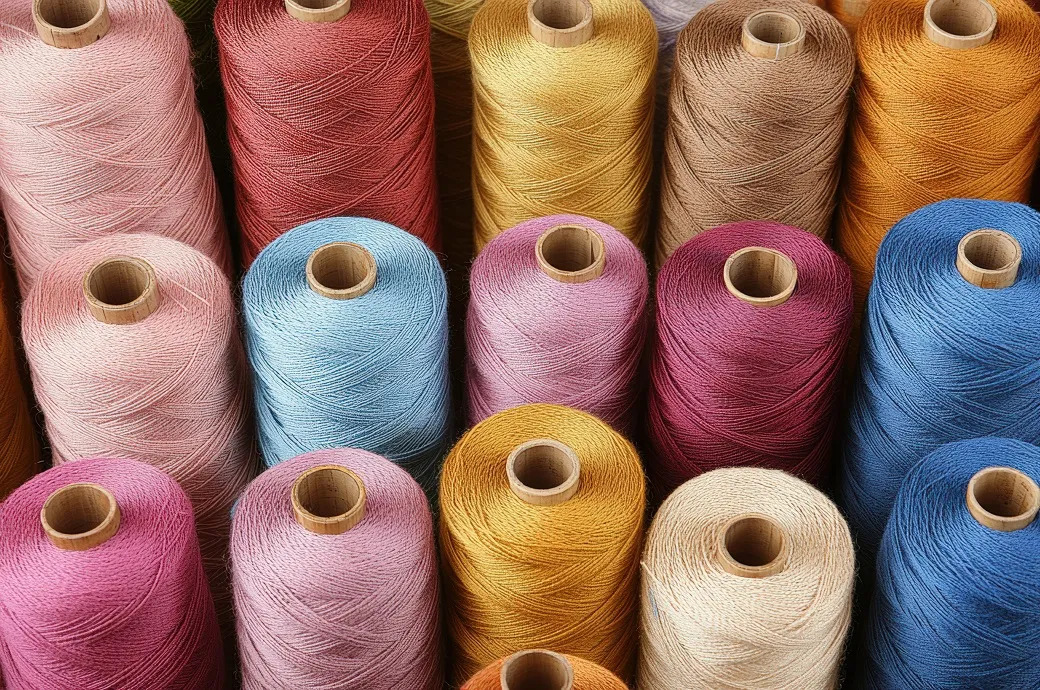
Bangladesh's yarn and textile manufacturing sector is facing a severe crisis, primarily due to a price gap between locally produced and cheaper imported yarn, particularly from India. This has led to a major slump in domestic sales and is threatening the existence of local textile mills, despite good domestic market. The core issues stem from a combination of unfavorable domestic policies, high operational costs, and the misuse of import privileges.
The vicious cycle imported vs. local yarn
A price gap has emerged between locally produced and imported yarn, making it economically unviable for garment manufacturers to source from domestic mills. This disparity is a direct result of government policies and market dynamics.
Table: Bangladesh and India yarn price difference
|
Yarn type |
Price per kg (approx. C&F Chattogram Port) |
Contributing factors to price |
|
Locally Spun 30-Count Yarn |
$2.95 - $3.05 |
High operational costs (expensive gas, high-interest bank loans), reduced government incentives (from 4% to 1%), and high duties on imported machinery. |
|
Indian 30-Count Yarn |
$2.68 - $2.72 |
Generous export incentives (RoDTEP, etc.), subsidies on electricity, capital, and labor, and alleged "dumping" practices. |
|
Price Gap |
$0.23 - $0.37 |
The substantial difference makes importing more profitable, as a saving of just $0.30 per kg makes a significant difference for large-scale garment manufacturers. |
The state of Bangladesh yarn sector
The repercussions of these challenges are evident in the operational struggles of Bangladesh's textile industry. The Bangladesh Textile Mills Association (BTMA) reports that local yarn sales have fallen by about 30 per cent from normal levels. This has forced mills to sell at a loss or at break-even, with over 50 factories having partially or fully shut down. Warehouses are overflowing with unsold stock, compelling some mills to store yarn inside factory floors.
Ironically the local textile industry has a substantial capacity. The Primary Textile Sector (PTS) meets approximately 85-90 per cent of the yarn demand for knitwear and 35-40 per cent for woven garments. The domestic textile and garment market is worth $12 billion annually, and local mills have the capacity to meet this entire demand. However, due to cheap imports and other issues, they only manage to sell about $7.5 billion of their products in the local market.
Textile mill owners claim that the issue has worsened due to the misuse of bonded warehouse facilities and the smuggling of yarn and fabric. They argue that huge amounts of illegal and untaxed yarn are being sold in the domestic market, further undercutting local mills.
Backward linkage and raw material reliance
Bangladesh's textile industry contributes over 13 per cent of the country's GDP, with the Ready-Made Garment (RMG) sector accounting for over 84 per cent of total export earnings. However, this growth is heavily reliant on imported raw materials. Bangladesh imports 97 per cent of its raw cotton, making the industry highly vulnerable to global price and currency fluctuations. Local mills meet approximately 85 per cent of the demand for knit fabrics but only 40 per cent for woven fabrics, with the rest being imported.
Meanwhile, Indian yarn imports continue to grow, tightening the squeeze on local producers.
Table: Bangladesh yarn imports
|
Data Point |
2024 |
2025 (January-July) |
|
Yarn Imports from India |
Rose by 41% |
Imports increased further |
|
Total Yarn Imports |
Reached a record $2.28 billion |
N/A |
|
Imported Yarn from India (by volume) |
340 million kg (47% of total imports) |
N/A |
|
Yarn imports from China (by volume) |
276.1 million kg (38% of total imports) |
N/A |
Data compiled from various sources including the National Board of Revenue (NBR) and the Bangladesh Textile Mills Association (BTMA).
The rise in yarn imports aligns with a broader increase in raw material imports for the RMG sector. Bangladesh Bank data shows double-digit growth in most textile-related import categories.
Table: Bangladesh textile related imports
|
Imported raw material |
FY 2024 ($ bn) |
FY 2025 ($ bn) |
YoY growth |
|
Total RMG Raw Materials |
$16.78 |
$18.44 |
+9.9% |
|
Raw Cotton |
$3.60 |
$3.46 |
-4.30% |
|
Yarn |
$3.21 |
$3.61 |
+12.3% |
|
Staple Fibre |
$1.39 |
$1.53 |
+10.0% |
|
Textiles and Related Articles |
$7.72 |
$8.69 |
+16.0% |
Data from Bangladesh Bank, Export Promotion Bureau
Thus the high dependence on imports and the struggle of the local manufacturing sector is a major challenge to Bangladesh's economic stability and its long-term goal of becoming a key player in the global apparel supply chain beyond being a low-cost manufacturer.
Mango has partnered with TextileGenesis to achieve end-to-end traceability for textile materials by leveraging cutting-edge digital technology
The partnership leverages TextileGenesis's platform to create a robust and verifiable digital record of the materials used in Mango's products.
Traditional textile supply chains are complex and opaque, making it difficult to verify the origin and sustainability claims of fibers (like organic cotton or recycled polyester). Mango is integrating the TextileGenesis platform to create a digital fingerprint for its preferred sustainable fibers, allowing the company to trace materials from the raw fiber stage through spinning, weaving, and final garment production. This initiative is crucial for Mango's long-term sustainability strategy, which aims to ensure all materials meet strict environmental and social criteria.
TextileGenesis uses proprietary technology to assign a unique digital ID, known as a ‘Fibercoin,’ to a batch of sustainable material (e.g., recycled cotton) at the very start of the supply chain (e.g., at the gin or recycler).
This Fibercoin travels digitally with the physical material through every transformation stage (spinning, dyeing, manufacturing), linking the finished garment on the shelf directly back to its verified origin. This system minimizes the risk of 'claim washing' or substituting conventional fibers for certified sustainable ones along the complex supply route.
Mango is initially focusing this partnership on tracing its strategic sustainable fibers including recycled polyester, recycled cotton, organic cotton and viscose. The brand joins other apparel makers adopting the TextileGenesis platform. This collective adoption aims to create a standardized, interoperable system for verifying sustainable claims across the entire industry, driving systemic change toward greater accountability.
As a major official partner and supplier, Adidas typically launches national team kits approximately six to nine months ahead of a major tournament like the FIFA World Cup. In November 2025, the brand launched these kits as the official home kits for the Adidas-sponsored nations participating in the tournament.
The overall design philosophy for the 2026 collection is reported to be centered on ‘United Cultures’ or ‘Host Heritage,’ incorporating design elements that subtly nod to the three host nations: the US, Canada, and Mexico. For the home kits, this usually translates into clean, classic designs with subtle, high-tech textures.
The kits feature the latest iteration of Adidas's Heat.RDY technology, designed to manage moisture and optimize air flow, ensuring athletes remain cool and dry in the varied summer climates of the host cities.
The brand moved further toward premium, lightweight application, utilizing 3D printed rubber crests and specialized silicone logos to reduce weight and minimize friction.
The entire collection is promoted as being made with 100 per cent recycled polyester, supporting Adidas’s commitment to end plastic waste
Ralph Lauren raised its annual revenue forecast after exceeding quarterly estimates, driven by resilient consumer demand for its high-priced polo shirts and cotton cable knit sweaters, even amid rising economic uncertainty. The company now projects full-year revenue to increase by 5 per cent-7 per cent on a constant currency basis, a significant increase from its previous forecast of low- to mid-single-digit percentage growth.
The company reported quarterly revenue of $2.01 billion, comfortably beating analysts’ estimates of $1.89 billion, according to data compiled by LSEG. Following the news, shares of the company rose approximately 1 per cent in premarket trading.
The luxury brand saw robust growth across key geographies. Their Q2,FY26 revenue from North America increased by 13 per cent, while its revenue in Europe was up by 22 per cent. The strongest growth came from China, where revenue soared by over 30 per cent during the quarter.
The owner of several high-end apparel and accessory brands continues to see strong sales across its entire portfolio despite selectively raising prices. This success is primarily attributed to the solid loyalty of its affluent customer base. Furthermore, Ralph Lauren's investments in innovation and marketing have successfully helped the brand win over younger shoppers who seek fresh and trendy styles. The brand’s visibility among consumers has been further boosted by celebrities such as Taylor Swift and Selena Gomez wearing its designs at recent high-profile events.
Garment manufacturers in Bangladesh are setting their sights on an additional $5 billion in annual export earnings following a crucial policy adjustment by the government regarding the deemed export status for certain auxiliary industries. This strategic move aims to resolve long-standing tax issues and reduce operational costs for garment factories, thereby boosting their competitiveness.
The dispute centered on whether utility providers (like power companies) and certain support industries (like laundries, dyeing, and embroidery) selling services to Export-Oriented Garment (EOG) factories should qualify as ‘deemed exporters.’ When this status was challenged, these service providers lost tax benefits, leading them to charge EOGs higher prices, effectively raising the garment sector’s production costs.
The government has reinstated and clarified the deemed export status for these critical support industries, making them once again eligible for tax breaks, including a crucial Value Added Tax (VAT) exemption on their sales to garment makers.
By exempting these intermediate goods and services from VAT, the cost of production for garment makers - especially those involved in intricate dyeing, washing, and finishing—is expected to fall significantly.
Industry leaders, including those from the Bangladesh Garment Manufacturers and Exporters Association (BGMEA), believe this reduction in operational costs will make their products more price-competitive globally. They project this single policy adjustment could immediately contribute to an extra $5 billion in annual export value. The move is critical for maintaining Bangladesh's edge against competitors like Vietnam and India, especially in the context of rising global inflation and buyers demanding lower prices.
This clarity provides predictability for businesses, encouraging both domestic and foreign investors to invest in modernizing dyeing, washing, and finishing facilities, which are essential for producing high-value apparel.
The consensus is that by resolving this tax ambiguity, the government has given a much-needed push to the garment sector, allowing manufacturers to focus on securing larger orders and pushing up export earnings.

The historic economic understanding between US President Donald Trump and Chinese President Xi Jinping, reached in Busan last week, may have eased pressure on a few politically sensitive commodities like soybeans and rare earths but for the $350-billion global textile and apparel trade, it has brought only a brief pause in turbulence, not a turnaround.
For US apparel importers and Asian exporters alike, the one-year tariff truce means a freeze on pain rather than a path to recovery. The looming threat of a 100 per cent tariff has been averted, but the punitive 47 per cent cumulative tariff on Chinese garments remains intact, locking both economies into a fragile, high-cost equilibrium. “For our customers, this is not a rate cut; it’s a freeze on a heart attack,” says Sarah Chen, a US-based trade consultant. “The existential threat is gone, but the long-term reality is that US apparel remains the most expensive in the world to import from China.”
Tariffs still weave the costliest fabric
The agreement leaves the core of Section 301 duties untouched. While overall tariffs on Chinese imports have been lowered from an average of 57 to 47 per cent, the apparel sector, unlike semiconductors or agri-inputs remains excluded from substantial relief. For US retailers, that means duty payments continue to eat into already thin margins. Apparel brands are caught between absorbing the cost or passing it to consumers each option eroding competitiveness.
Table: Tariff burden on US apparel importers
|
Item |
FOB cost (per unit) |
Existing US tariff rate (approx.) |
Duty paid (per unit) |
Total landed cost |
|
Men's Cotton Shirt |
$15.00 |
47% (Cumulative Rate) |
$7.05 |
$22.05 |
|
Women's Knit Sweater |
$20.00 |
47% (Cumulative Rate) |
$9.40 |
$29.40 |
|
Industry Average |
$100.00 |
47% |
$47.00 |
$147.00 |
Source: Industry estimates and White House Fact Sheet on new 47% cumulative rate.
The table underscores how the 47 per cent cumulative tariff continues to define the landed cost structure for US apparel importers. Even with the Busan truce, a men’s cotton shirt priced at $15 FOB effectively costs over $22 after tariffs, a 47 per cent boost before logistics and retail markup. For brands, this means the average imported garment from China remains nearly one-and-a-half times its base manufacturing price by the time it clears customs. The tariff freeze, while avoiding further escalation, keeps operating margins severely compressed. In retail terms, this has translated to sustained 5-8 per cent higher shelf prices for mid-market US fashion brands. It also means deferral of private-label expansion, as companies hesitate to commit to China-heavy supply chains. And greater inventory concentration in tariff-free categories, like accessories or blended-origin products. In essence, the US apparel supply chain remains structurally uncompetitive as long as Section 301 tariffs persist turning stability into stagnation.
Cotton relief a rare win for china’s textile mills
The only direct relief for the textile supply chain comes from China’s decision to suspend its 25 per cent retaliatory tariffs on US cotton. This move reopens a crucial artery of trade between the world’s largest cotton consumer and the US, its traditional supplier.
Table: Impact of China's suspended retaliatory tariff on US cotton
|
Metric |
Before truce (with China retaliatory tariff) |
After truce (tariff suspended) |
Impact |
|
US Cotton Import Tariff (China) |
25% (Retaliatory Duty) |
0% (Suspended) |
Direct cost reduction for Chinese mills. |
|
Price of Imported US Cotton (per metric ton) |
$1,900 (est.) |
$1,520 (est.) |
US cotton is now cheaper for Chinese buyers. |
|
Cost to Chinese Apparel Maker |
High (due to expensive input) |
Lower (due to cheaper raw material) |
Improved competitiveness. |
This data highlights a rare mutual win in the trade standoff: the removal of China’s retaliatory duty on US cotton. By cutting the tariff from 25 per cent to 0 per cent, Chinese mills immediately save about $380 per metric ton of cotton, restoring direct access to high-quality American fiber. The ripple effects are significant. Chinese textile mills regain cost competitiveness versus peers in India and Pakistan, where raw cotton prices remain volatile. US cotton farmers, particularly in Texas and Mississippi, regain access to their largest export market, stabilizing prices that had fallen 18 per cent in 2024. And global yarn prices could ease modestly (2-3 per cent), as cheaper cotton inputs filter through production chains.
This cost reprieve reinforces China’s upstream strength in yarn and fabric production, offsetting the disadvantage of high tariffs on finished goods. It also revives interdependence between the US cotton belt and China’s textile heartlands a pragmatic economic bridge amid ongoing political friction.
The ‘China Plus One’ strategy meets a pause
The truce reshapes the momentum for Vietnam, Bangladesh, and India three major beneficiaries of the US-China trade war. For years, these countries absorbed diverted apparel orders as brands sought to derisk from China. The 47 per cent tariff freeze, however, slows that diversification push by reducing near-term urgency.
Table: Comparative US apparel tariff rates post-truce
|
Sourcing country |
US apparel export value (2024 Est.) |
Average US tariff rate (approx.) |
Importer savings vs. China |
|
China (Benchmark) |
$30.0 bn |
47% |
N/A |
|
Vietnam |
$15.3 bn |
15% - 20% |
27 - 32 ppt |
|
Bangladesh |
$10.0 bn |
20% |
27 ppt |
|
India |
$5.0 bn |
50% (Subject to new specific duties) |
-3 ppt (Net Loss) |
Source: WTO, USITC, and apparel trade association estimates
Vietnam and Bangladesh still enjoy substantial tariff advantages, but the freeze on escalation weakens their investment narrative. China’s cheaper input costs (via US cotton) may even enhance its competitiveness relative to its Southeast Asian neighbors, given Vietnam’s heavy dependence on Chinese fabrics.
India, in contrast, faces an unexpected reversal. Following new US-specific duties on Indian textile products, its exports have become more expensive than Chinese goods, a significant blow to the Make in India agenda and to its rising role as a diversification hub.
Ripples across Asia
Vietnam’s wait-and-watch policy: Knitwear factory in Hanoi saw order volume rise 40 per cent (2021-24). Large US orders are now on hold as buyers reassess supply chain risk. The focus is on value-added, high-quality SKUs where tariff savings outweigh higher production costs.
Bangladesh’s volume-driven stability: High-volume denim and T-shirt manufacturer in Dhaka saw minimal downside and 27-point tariff gap with China keeps orders flowing. Their strategy is aggressive pursuit of volume contracts to lock in low-cost market share.
The regional case studies demonstrate how each manufacturing hub is adapting its playbook to the truce’s partial stabilization. Vietnam’s growth boom is pausing as US buyers wait for the next tariff cycle. Bangladesh’s mass-production model remains robust, sustained by low tariffs and entrenched scale. India faces an uphill climb as recent US duties reverse its cost advantage, forcing exporters to pivot toward EU, Middle East, and Japan markets instead.
Together, they illustrate a clear strategic theme: tariff policy now determines investment flows more than cost efficiency or labor advantage. And these contrasting outcomes highlight the new fragmentation of Asia’s apparel ecosystem.
The bottomline is that the Busan agreement buys the textile trade one more year of predictability but not peace. The 47 per cent tariff remains the binding thread that dictates sourcing costs, retail pricing, and investment flows. The upside lies primarily in cotton price normalization and supply chain stability. The downside is strategic paralysis: no meaningful relief for US importers, no new stimulus for Southeast Asia, and a worsening competitive position for India. “The trade war isn’t over, it’s just between seasons,” opines a senior executive at a US apparel conglomerate. “Everyone’s waiting for the 2026 renegotiation to know whether to rebuild in China, or to finally move out for good.”
And for now, the global textile and apparel trade hangs together stabilized by compromise, yet constrained by cost. The Busan truce is a temporary patch, not a repair. As 2026 looms, the industry faces a familiar dilemma: adapt under a heavy tariff blanket, or unravel when the next round of negotiations begins.
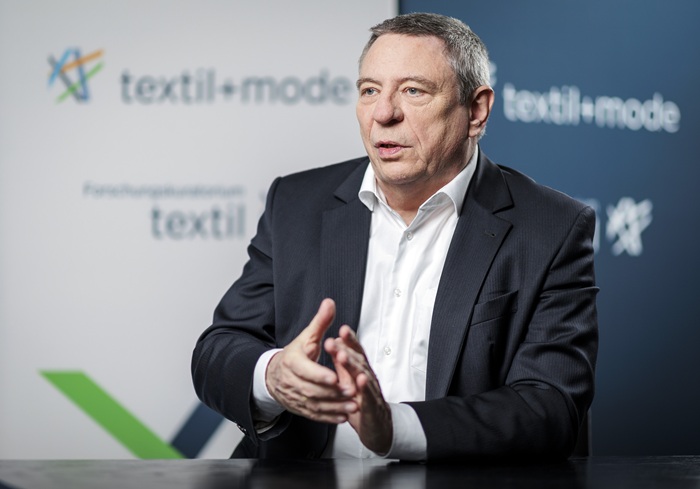
The German Textile and Fashion Industry Federation (Gesamtverband textil+mode) is urgently warning the German Bundestag about the potential negative consequences for small and medium-sized enterprises (SMEs or Mittelstand) stemming from the currently debated public procurement law reform. Uwe Mazura, CEO of the Federation, stressed the need to safeguard access for SMEs to public contracts, particularly those with the Bundeswehr (German Armed Forces).
The Federation's appeal comes ahead of a public hearing of the Committee for Economic Affairs and Energy in the German Bundestag on the Bundeswehr's planning law, scheduled for November 10. While acknowledging and welcoming the goal of making procedures more efficient, Mazura cautioned that the reform's design "must not be at the expense of small and medium-sized enterprises," warning that if the draft regulations are passed as is, "the Mittelstand is once again in danger of drawing the short straw".
Critical concerns with the proposed reform
The Federation identifies several key areas of concern within the proposed reform that could structurally disadvantage smaller businesses. The planned expansion of direct awarding (Direktvergabe)—where public contracts can be granted immediately without a tender process—is viewed as particularly critical. This system primarily benefits large companies with established government contacts and extensive service offerings, making it difficult for smaller businesses to be considered. The industry considers the softening of the established "lot procedure" (Losverfahren), which previously required the mandatory division of large contracts into smaller lots as a central instrument for ensuring SME participation, a setback. Relaxing this rule risks centralized large-scale procurements, detrimental to many specialized businesses. Furthermore, the proposed limitation on the legal reviewability (rechtliche Nachprüfbarkeit) of the procurement process is seen as jeopardizing legal certainty. SMEs, in particular, rely on transparent and verifiable procedures, and weakening these control mechanisms would also structurally disadvantage them.
Demands for fairer competition To secure fair competitive conditions, the Gesamtverband textil+mode is urging a revision of the reform in favor of the Mittelstand, calling for the following specific measures: They demand a mandatory procurement quota for SMEs, meaning a legally defined share of public contracts should be reserved for small and medium-sized enterprises. The retention of the lot procedure is also necessary, insisting the obligation to divide large contracts into smaller lots must be maintained. The Federation requires transparent procedures, meaning all procurement processes must remain traceable and reviewable, without restricting legal reviewability. Lastly, they are calling for equal opportunities in direct awards, ensuring that medium-sized suppliers must also be considered even in accelerated procedures.
CEO Mazura concluded with a powerful statement: "Politicians praise the Mittelstand in all their Sunday speeches: It is the backbone of the economy. If we now make it more difficult for them to access public contracts, we weaken not just individual companies, but entire value chains in Germany and Europe," he said. He stressed that a procurement reform "must not become an open door for distortion of competition; it must ensure equal opportunities for all companies, regardless of size".

